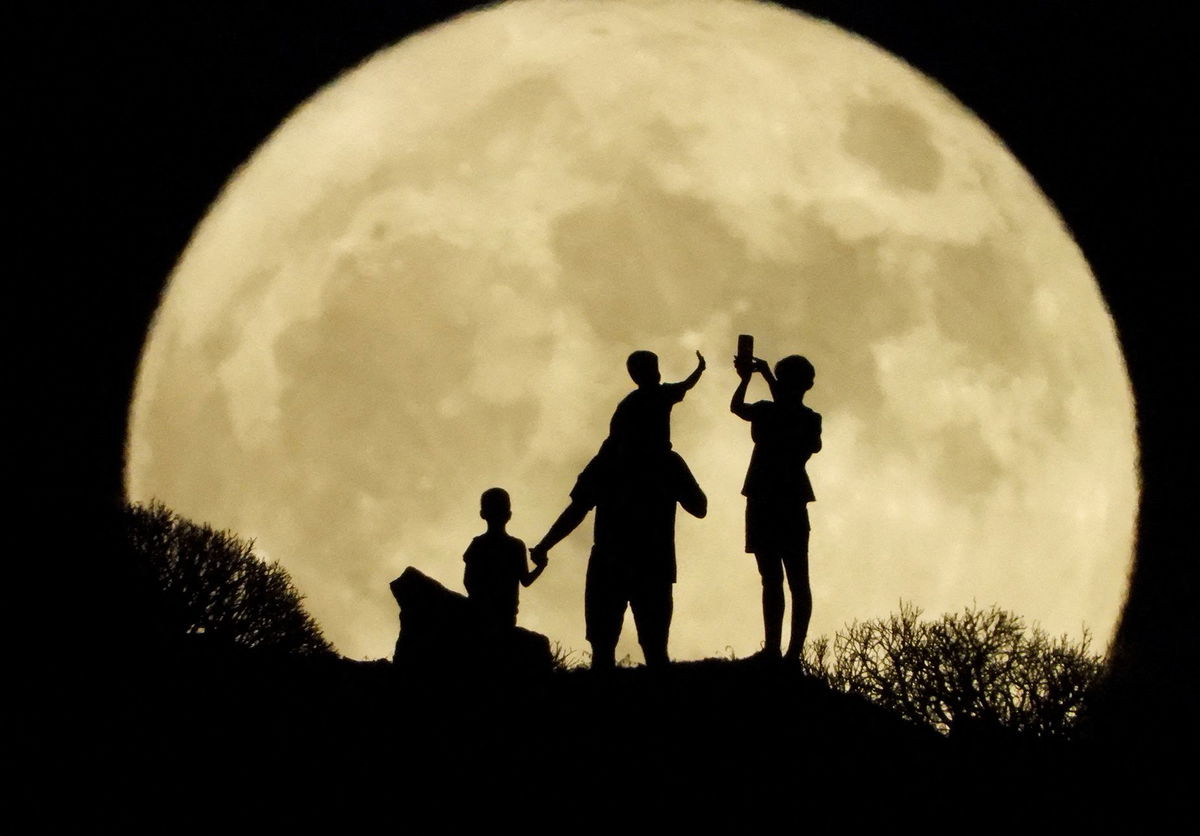September’s full harvest moon is the last supermoon of the year

Originally Published: 28 SEP 23 08:33 ET Updated: 29 SEP 23 09:06 ET By Ashley Strickland, CNN
Editor's note: Sign up for CNN’s Wonder Theory science newsletter. Explore the universe with news on fascinating discoveries, scientific advancements and more.
(CNN) — The full harvest moon shined in the early morning hours of September 29, also marking the fourth and final supermoon of 2023.
September’s full moon reached peak illumination around 5:58 a.m. ET Friday, but it is expected to appear entirely illuminated through Saturday morning, according to NASA.
Definitions of a supermoon can vary, but the term generally denotes a full moon that is closer to Earth than normal and thus appears larger and brighter in the night sky. The moon is 224,854 miles (361,867 kilometers) away from Earth, about 14,046 miles (22,604 kilometers) closer than its average distance. The closest supermoon of the year occurred on August 30, when the moon was just 221,954 miles (357,200 kilometers) away from Earth.
September’s full moon was expected to appear about 5% bigger and 13% brighter than the average full moon, according to NASA.
Some astronomers say the phenomenon occurs when the moon is within 90% of perigee — its closest approach to Earth in orbit.
The name harvest moon is a nod to the season of gathering because the event occurs close to the beginning of fall, or the autumnal equinox, which fell this year on September 23. Typically, this time of year is when many crops peak in the Northern Hemisphere, and the bright moon once helped farmers work into the evening to harvest their bounty ahead of the first frost, according to The Old Farmer’s Almanac.
Other monikers for September’s full moon across different indigenous tribes include the corn maker moon from the Abenaki tribe, the moon of the brown leaves from the Lakota people and autumn moon from the Passamaquoddy tribe.
Other harvest-celebrating traditions around this time include the Korean festival of Chuseok and the Japanese Buddhist holiday of Higan, both of which also celebrate the remembrance of ancestors, according to Royal Museums Greenwich.
Many people associate the harvest moon with being orange in color as it begins to rise, but the same could be said of all full moons. The hue is due to the thickness of Earth’s atmosphere near the horizon, which is greater than when the full moon is overhead, according to EarthSky.
Several planets are also currently visible in the night sky, according to The Planetary Society. Gold-tinged Saturn and bright Jupiter rise in the east and appear high in the later hours, while Venus (one of the brightest objects visible in the night sky) shines before dawn. Meanwhile, Mercury dances low along the eastern horizon before dawn.
Full moons and supermoons
Here are the full moons remaining in 2023, according to the Farmers’ Almanac:
● October 28: Hunter’s moon
● November 27: Beaver moon
● December 26: Cold moon
Lunar and solar eclipses
People across North, Central and South America will be able to see an annular solar eclipse on October 14. During the event, also called the “Ring of Fire,” the moon will pass between the sun and Earth at or near its farthest point from Earth. The moon will appear smaller than the sun and encircled by a glowing halo.
To avoid damage to the eyes while looking at the phenomenon, viewers should wear eclipse glasses.
A partial lunar eclipse will also take place on October 28. Only part of the moon will pass into shadow as the sun, Earth and moon will not completely align. This partial eclipse will be viewable in Europe, Asia, Australia, parts of North America and much of South Africa.
Meteor showers
Each of the remaining meteor showers expected to peak this year will be most visible from late evening until dawn in areas without light pollution. Here are the events’ peak dates:
● Draconids: October 8
● Orionids: October 20-21
● Southern Taurids: November 4-5
● Northern Taurids: November 11-12
● Leonids: November 17-18
● Geminids: December 13-14
● Ursids: December 21-22
The-CNN-Wire
™ & © 2023 Cable News Network, Inc., a Warner Bros. Discovery Company. All rights reserved.



